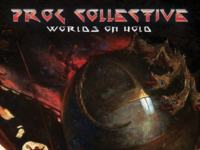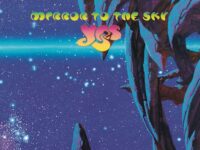“Sister Sleeping Soul” is a rather unwelcome return to the kind of soft rock-prog that doomed Yes’ often-derided 2014 album Heaven and Earth.
Lyrics that actually reference teenage nights and the “crazy daze of youth” don’t exist in the same galaxy with the topographic oceans of old. That’s probably why Yes smartly placed this much lighter fare outside of the main song sequence for 2021’s The Quest.
“Sister Sleeping Soul” follows the notable successes of “The Living Island” with a too-easy seamlessness on streaming services, but it’s actually the first of three throwaway bonus tracks. They provide a fuller picture of how a quarantine-sparked creative space was ultimately filled, but really almost no concrete revelations. That said, listen closely and you’ll find one one tucked away in “Sister Sleeping Soul.”
Like much of The Quest, “Sister Sleeping Soul” grew out of pre-COVID collaborations between Steve Howe and Jon Davison – though this is the only song in which Davison is officially credited as a co-writer. These early in-person sessions convinced Howe that Yes’ 22nd studio album was actually a possibility.
By the time Yes was ready to complete the tracking, however, band members had been separated across the globe by pandemic-related restrictions. Howe and Geoff Downes were in the U.K., Davison was in Barbados, and Billy Sherwood and Alan White were on America’s West Coast.
“Sister Sleeping Soul” would have to be created by exchanging files via the internet, with Howe applying a Portuguese 12-string to the proceedings from Curtis Schwartz Studio in West Sussex while Sherwood and White fashioned rhythm tracks at Uncle Studios in Van Nuys, Calif.
That’s when history came into play. Sherwood began collaborating with the late Chris Squire in the run up to 1991’s Union, and was a full-time member of Yes by the end of the decade. He also assumed a series of backstage roles along the way with Yes, serving as a touring musician, co-producer, engineer and mixer through Heaven and Earth. That familiarity played a key role in making this work.
Sherwood has become far more comfortable in knowing just how to play around Alan White, but also how to inhabit Chris Squire’s very large shoes – something that’s showcased perhaps to its fullest degree on the otherwise pretty uninteresting “Sister Sleeping Soul.” He and White spent a lengthy amount of time with the U.K.-recorded tracks, getting to know every small nuance before they completed their parts over a little more than a week.
As everyone’s contributions were stitched together – Downes also makes his own notable contributions here – Sherwood said something clicked. The Quest began to sound “like we were all there in the same room together,” he told the Prog Report. “And I think a big part of that is the rhythm section design, the way that that came about set the framework for the other things to just fall right into place.”
Howe noticed something else, perhaps because there was more time to ruminate with so much distance between them. Sherwood’s playing, he told UCR’s Ryan Reed, was becoming “like a tribute to Chris.”
Credit, in part, goes to six subsequent years spent as Squire’s hand-picked replacement in what stands as the longest-tenured Yes lineup ever. They’ve often been playing entire-album shows, giving Sherwood a chance to explore Squire’s approach more deeply. His decades-long friendship with Squire also tends to add an emotional complexity.
Billy Sherwood’s performance on “Sister Sleeping Soul” ties all of that together, complete with a few very Squire-like flourishes. An impressed Howe noted that “the way he plays [this song] is a great example of how he’s learned from Chris what Chris might have played,” he told Reed. “The way he sits out of certain beats: Much of it is intuitive with Billy, because of his love for Yes – and, in particular, Chris.”
There are, of course, easier ways to achieve this. Jamming together in a shared space requires far less studying. That’s something Sherwood, despite such an impressive showing on “Sister Sleeping Soul,” would very much like to be part of again.
“It’s quite a different experience to do file sharing than it is to stand in a studio with your buddies and just, you know, talk music and make music – but nevertheless, it’s the age we live in,” Sherwood told the Prog Report. “I’d love to see a Yes record, in the future, made old school.
“Like, we did that with [1999’s] The Ladder, for instance,” Sherwood added. “We moved up to Vancouver, Canada, for a few months and all had our own apartments. [We] met at the studio every day, and wrote for 30 days. You could be sitting in the back of the room, just not saying anything, and an idea comes out and you speak it to the room. It floats or it doesn’t, but those moments are not there when you’re doing file share.”
- The Bright Spots in George Harrison’s Troubled ‘Dark Horse’ Era - December 29, 2024
- The Pink Floyd Deep Cut That Perfectly Encapsulates ‘The Wall’ - November 29, 2024
- Why Pink Floyd’s ‘The Endless River’ Provided a Perfect Ending - November 11, 2024



